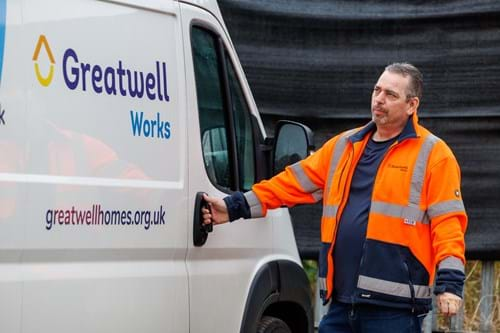Chris Holloway, executive director at Greatwell Homes tells us about how they used the advice from the ‘Rethinking repairs and maintenance’ project to rethink their own voids service.

Kettles, void properties and atomic improvements
If you purchased a kettle from your local high street, you’d expect it to work, right? (Unless of course you were sold a poor quality or defective kettle). So why should that principle not apply to social housing?
That was the question we asked ourselves at Greatwell Homes, when we undertook a strategic review of our voids service. Set against a context of rising material costs, and media coverage concerning the poor condition of some social housing, we felt the time was right to review one of our most important service areas. This proved to be good timing as the ‘Better Social Housing Review’ was published, and challenged the sector to work with customers, staff and contractors to create that excellent repairs and maintenance service we all aspire to deliver!
Where did we start?
Firstly, we looked at what we measure. When we look at how we measure success with voids, landlords typically measure their average re-let time and the average void cost, both of which are important and show that a voids service is efficient.
I would counter that by noting that these metrics only show half of the picture. Measuring how quickly (and cheaply) we can complete void repairs, doesn’t really capture an effective voids service - especially from the customer’s viewpoint.
We engaged customers to understand what was most important to them about their new home and used this feedback to create a bespoke suite of performance reports based on customer satisfaction. These reports cover the nominations process, the pre-tenancy process and the void product itself and are used by managers to identify and drive service improvements to create higher satisfaction. These reports were blended with the more traditional measures around re-let time and cost to ensure that our service could be seen as both efficient in financial terms and effective from the standpoint of customer outcomes.

A key insight we gained was from this, was the volume of repair requests we were getting from new customers in the first three months of the tenancy. Going back to the notion of buying that kettle from the high street, if you provide a great quality void then ideally you wouldn’t need to go back straight away for any repairs, would you?
So how does this impact the customer experience?
If we provided a truly fantastic void property, would that customer be more likely to be satisfied? And would that satisfaction lead to better behaviours (such as paying the rent on time, looking after the property and allowing access for those all-important compliance visits?). Conversely, if the voids we provided were of poor quality, does that really encourage customers to put down roots in their new home and community? Will they reflect their landlord’s apparent lack of effort by not caring about the rent, their home, the conditions of their tenancy and so forth?
With that in mind, we looked at the reasons for returning to these homes in the first three months, and strengthened our lettable standard to do these repairs whilst properties were void. One example we came across was a small fault with toilets; renewing a particular part whilst the home was empty proved to be much cheaper than the time and money of sending an operative to a tenanted property to fix.
Looking at the past to improve the future
From analysing previous tenancies that failed during the first twelve months, we segmented customers along the protected characteristics that we collect and from that we gained an understanding of which customers were statistically more vulnerable to tenancy failure in the first twelve months. These customers were contacted more frequently during the first twelve months to help them set up their home and work through any issues in a timely manner.
Customer feedback also gave us the insight that pushed us to develop a furnished tenancy offer alongside other initiatives such as providing fully decorated and carpeted homes for independent living customers, and for those escaping domestic violence.

Our approach was based on ‘systems thinking’ so we looked at the voids process as part of the overall customer and tenancy journey. Starting with an offer of accommodation and continuing past the void process and into the tenancy. What we noted in outputs was very pleasing:
- We saw an average of 24 per cent in the reduction of repair costs during the first 90 days of the tenancy
- We saw customer satisfaction with their new home rise from 79 per cent to 82 per cent
- Most importantly, we have seen the number of successful starter tenancies rise from 94.7 per cent to 100 per cent over three years to 2023/24.
In closing, whilst we still have a way to go, this approach of ongoing listening to customer feedback, blending those performance measures we can benchmark against with those that are key to customer experience have led to a place where our average re-let times are currently top quartile, we have reduced the frequency and cost of repair visits in the first 90 days of the tenancy, improved customer satisfaction and increased tenancy sustainment.
This process of ‘atomic improvement’, making small changes in and around the voids process has helped us deliver a service I would argue is both efficient and effective from both the customer and business perspective.



